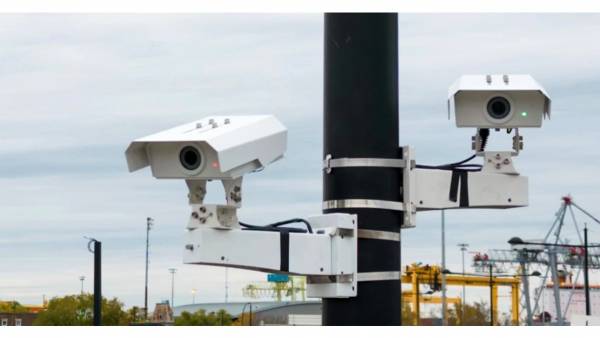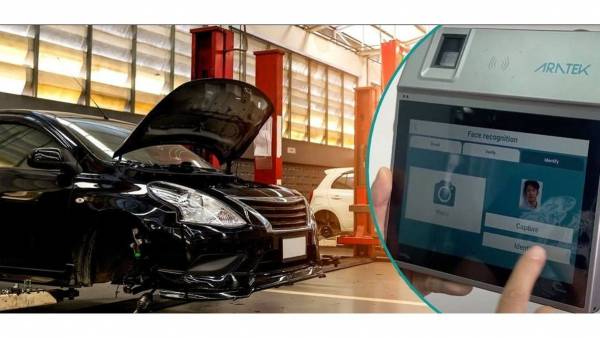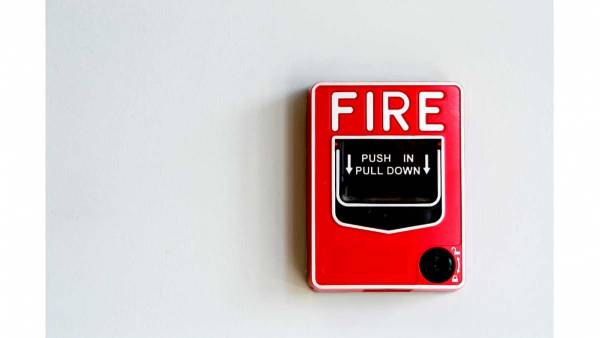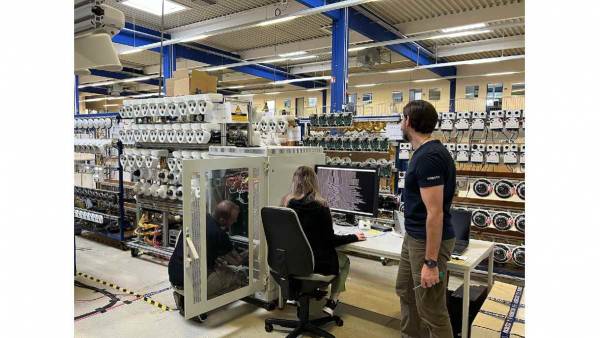In this first installment, an account is made of what perimeter security implies within a physical security system, the initial concepts for a good installation, as well as an approach to security levels.
by Iván Darío Quintero
Among the main components of a program of this nature are fire programs, closed circuit television, permanent control of electrical systems, ventilation, intrusion detection programs among others. Each of these segments has a fairly specialized degree of development and every day the constant advances in science and technology increase their complexity.
Many of these topics have been widely discussed and addressed at length in our magazine, but today, we want to dive deep into the abysses of one that has been little addressed, Perimeter Intrusion Detection Systems (PIDS), a vital component if we talk about rigorous physical security. As a final destination, we will have the latest advances and trends that are known about it.
In this opportunity, we rely for the realization of this article on the extensive knowledge shared by Hiroshi Kuramochi, project engineer of the company Senstar Stellar and Sergio Rivera, sales manager of Southwest Microwave Inc. Both, experts in perimeter security.
First approximations
To start our tour, it will be better to start where it belongs, at the beginning. Within physical security, perimeter detection is the first line of defense of a facility, whether called a building, construction, factory, or base. The idea with which a perimeter detection system is installed is basically to stop and alert early to the possibility of an intrusion into the property. In the case of prisons, it is also used to detect an attempt to flee in advance. It goes without saying that the perimeter area is the border line that is between the property and the outside of it.
To protect the perimeter, specific points such as the border line must be controlled, in addition to the entrances and exits of the installation, this with the aim of detecting and delaying a possible intrusion.
According to experts, when installing a perimeter detection system, what has to be analyzed is what level of security the user is looking for, according to what he needs, an installation can be carried out with low, medium, high or maximum security.
Security levels
The levels of security in the first line of defense are determined depending on the scope that is intended to have with the intrusion detection system, so, for example, at low security levels we find that the objectives that are intended and the concepts that are handled are to prevent, deter and delay possible perimeter violations. At this level, physical means such as fences, meshes, concertinas, etc. are usually used to fulfill the purposes.
Then, if you want to have a medium level of security, then you talk about the same concepts as in the previous level and add the concepts of detection and response. The devices that could be used for these two additional purposes would be technical, active means, such as volumetric sensors, infrared, CCTV, speakers, sirens, lights, strobes, etc.
Now, when we talk about a high security level, the concepts and devices of the previous levels are added and the concept of response is added, which in this case refers to an operational reaction, based on procedures, rules and trained personnel. This response is different from that of level two, where the reaction generated is limited to activating sirens and speakers.
When a perimeter with maximum security is already required, experts recommend duplicating all resources by two, that is, placing two lines of defense so that there is redundancy, that is, several concentric rings are protected.
Technical and physical means
Within the perimeter detection systems, a difference is usually made between the means used to meet the objectives of the security levels raised in the previous section, these are: physical means and technical means.
The physical means, which are called passive, are barriers such as fences, bars, fences, concertinas etc. and are usually the first elements installed to prevent an intrusion.
The technical means, which are known as active, are electronic devices such as volumetric sensors, microwaves, infrared, megaphone cameras, among others.
There are many kinds of technical systems used to create the first line of defense, let's look at some of the most implemented at all levels of security in what has to do with intrusion detection and evaluation.
Through some algorithms these devices determine for example if the mesh is being cut or scaled, through the algorithms they can also determine if the movement of the mesh is caused by the wind or another natural phenomenon, there are other sensors for wall that detect if someone intends to break or break them.
Another system that is widely used is the buried cable, this -obviously according to its technological capacity- is usually used for three functions: detect the invasion, send power to the following processors of the perimeter and transport the alarm signals to the control center, Buried cables can work on any weather conditions and are quite difficult to evade, which is why experts recommend it for high-security applications. Most buried cables have a volumetric detection field with ranges that can reach three meters, so they do not need to be stepped on directly to generate the alarm.
Volumetric sensors are other technical means widely used in the detection of intruders, of these there are various characteristics due largely to manufacturers; however, most of these sensors present as their greatest qualities the fact of protecting areas up to 400 meters (which can be sectorized), the ability to adapt to the characteristics of the terrain, they can also calculate the weight and speeds of the bodies that are on the perimeter; To avoid false alarms, experts say that these types of sensors have up to 95% detection capacity.
In addition to the fact that the devices used in the perimeter systems have as their main objective to carry out the work of detection, deterrence or evaluation, etc., there are other aspects that must be taken into account when making the choice of these equipment, such as energy consumption and communication systems with control panels or monitoring centers.
According to experts Rivera and Kuramochi, despite what may be believed, these perimeter devices usually generate very low energy consumption, because they do not even consume a watt of power, of course, it depends on technology, because there are some that consume more and others that consume less.
Another important aspect in relation to energy is the way in which it is carried to the devices, a very interesting matter if we think that we are talking about devices that in some cases are more than 100 meters away. According to our experts, normally energy is carried in two ways to these remote places, one is through a power ring around the perimeter, which is normally composed of a conduit where electrical energy is carried, either alternating current or direct current, depending on the type of sensor and the design of the site; the other way is when they use wires in which they themselves carry electrical energy.
The other point I was writing about, which must be taken into account to determine what type of devices should be used for an intrusion detection installation, is what has to do with communications and here key factors are also framed, such as protocols and wiring.
Protocols and communications
Normally, all perimeter protection systems send alarm signals to the panel in two ways: by dry contact (relays) or by network (network), when we talk about dry contact, we refer to a signal from the switch, which can be open signal (normally open) or closed (normally close).
Dry contact is generally used for small perimeters, since these do not support large distances, because the cable used to send the alarm signal, ends up creating high impedance, and thus, the signal does not reach the control center.
Anyway, experts recommend, for safety, dry contact in the normally close option, because if for some reason, the cable is cut by the intruder, the central will know.
In the case of network, the sensors can communicate with the panel or the monitoring center with two types of protocols, the RS-422 or the RS-485, this type of communications are the most used when there are many sensors, for example in large perimeters, but in any case the RS-422 protocol is the one that reaches a greater distance, managing to send communications up to 1,200 meters, without repeaters.
Another difference between RS-422 and RS-485 is the number of cables needed to send the information; the first option needs nothing more than three threads and the second at least four. These protocols are currently transmitted over UTP cables, although the cables for RS-422 and RS-485 are of the braided type, not exactly UTP, since the UTP cables type 5 and 6 for example, have a small diameter and this generates a little resistance.
Through these protocols the signals are sent in the form of multiplexed data to the panel or central monitoring, for this, a visualization program installed on a computer is needed. These programs generally have options to import aerial photographs, or plant designs in Autocad or similar of the protected premises; when the alarm data reaches the central on the graphic map, the alarmed area appears, or it changes color, that is, the sketch refers to the point where the intrusion is being committed.
Depending on the integration that the system has, when the alarm arrives, in addition to showing the alarmed area, a preset of a mobile camera, dome type can be automatically activated to evaluate the event; other automatic options could be: activate lights, speaker, sirens, among others; the idea of these responses to sensor signals is to verify the event and alarm about it.
Currently they have ventured new communication technologies, such as wired or wireless TCP / IP communication, these developments have come to fall very well especially when the site that is going to be protected is very large, according to experts the main reason for its is wide acceptance is that the projects increase a lot in price when using the option n dry contact or network as the size of the site grows, this by the number of connections, power cables and cables for the signals, which is avoided with the IP.
However, experts also recommend that for high security sites TCP/IP communications or wireless communications are not used, this, due to the vulnerability that these systems still have, generally for greater security what should be used are serial communications, that is, network.
El TCP/IP
One of the main reasons for migrating to TCP / IP is to lower the installation costs in the infrastructure, that is, avoid the need to carry a communication cable from the processor that is at the perimeter to the control center.
TCP/IP topography allows the device's communication cable at the edge to only go to the nearest network point. From there, the information is transmitted through the institution's network until it reaches the control center. This means a lot in terms of savings when it comes to large protected premises.
Another advantage of TCP/IP over traditional systems is that they offer greater connectivity and that the user can monitor a site from anywhere in the world; this without neglecting the issue of costs, which is perhaps the factor that is most motivating migration.
And it is that the TCP / IP is not free of hakers, because according to experts they even know that they have come to block the system by multiple attempts of entry by IP.
Anyway, each manufacturer handles its sensors differently and has different policies towards that, but most manufacturers and integrators already have options, if not a total migration of their platform to IP.
Nowadays all manufacturers and installers have the possibility of mounting IP-based systems, either through the use of adapters or equipment fully designed to work on this technology. However, professionals recommend for greater security structured cabling.
The continuation of this article will be published in the next edition of SECURITY SALES, with topics as relevant as the VMD, criteria for proper selection of equipment, false alarms, analysis of the Latin American market and trends in the sector.

























Leave your comment